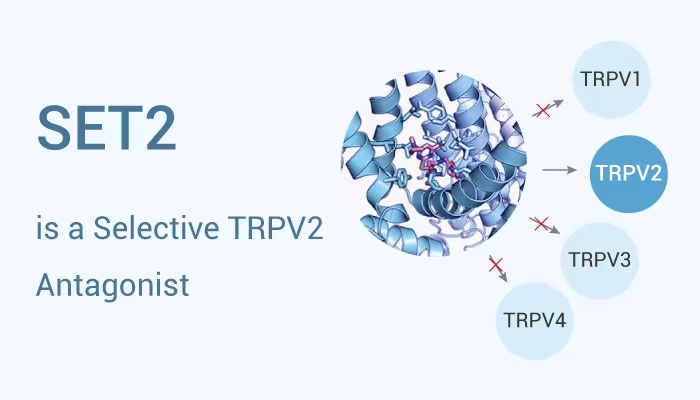TRP Channel (Transient receptor potential channel) is a group of ion channels located mostly on the plasma membrane of numerous human and animal cell types. There are about 28 TRP channels that share some structural similarities to
each other. These are grouped into two broad groups: Group 1 includes TRPC, TRPV, TRPM, TRPN, and TRPA. In group 2, there are TRPP and TRPML. Many of these channels mediate a variety of sensations like the sensations of pain, hotness, warmth or coldness, different kinds of tastes, pressure, and vision. TRP channels are relatively non-selectively permeable to cations, including sodium, calcium and magnesium. Transient receptor potential (TRP) channels play significant roles in human physiology and facilitate the permeation of essential ions (Na+, Ca2+) through the plasma membrane.
TRPV2 is a Ca2+-permeable non-selective cation channel belonging to the vanilloid subfamily of the TRP channels. TRPV2 plays a significant role in maintaining physiological cardiomyocyte function, with potential therapeutic use of TRPV2 blockade in cardiomyopathy. Meanwhile, TRPV2 plays a role in phagocytosis in macrophages, placental development, T-cell activation, and insulin secretion in pancreatic β-cells. Moreover, TRPV2 plays a significant role in the progression, drug resistance and metastasis of different forms of cancer.
SET2 is a selective TRPV2 antagonist. SET2 blocks the TRP channel and suppresses prostate cancer cells migration. Meanwhile, SET2 reduces the lysophosphatidic acid-induced cytoplasmic calcium increases. In vitro, SET2 abrogates the migration of PC-3M cells expressing TRPV2. Besides, SET2 can inhibit 2-APB-evoked current in HEK293T cells transiently co-transfected with TRPV2 and LPAR1. What’s more, SET2 inhibits the increase of LPA-induced cytoplasmic calcium and LPA-induced migration in PC-3M cells.
All in all, SET2 is a selective TRPV2 antagonist. SET2 can block the TRP channel and suppresse prostate cancer cells migration.